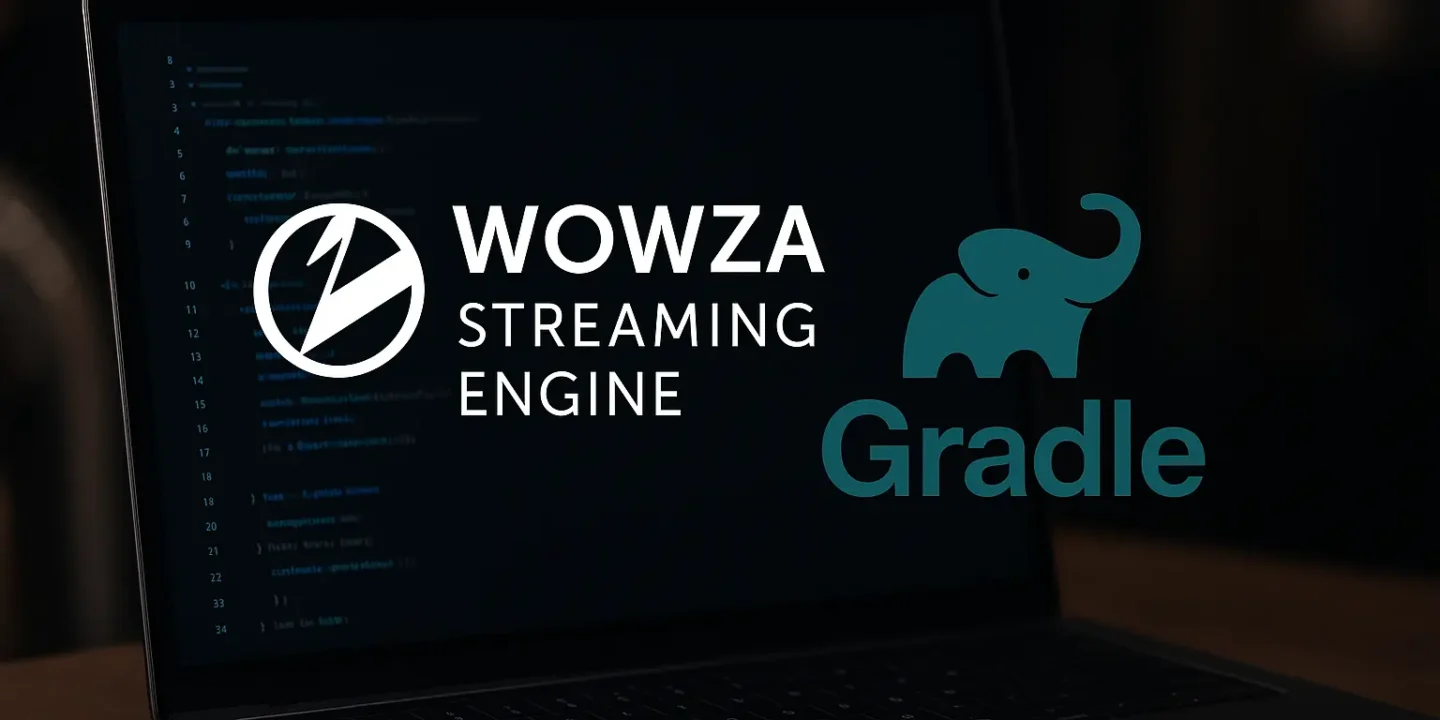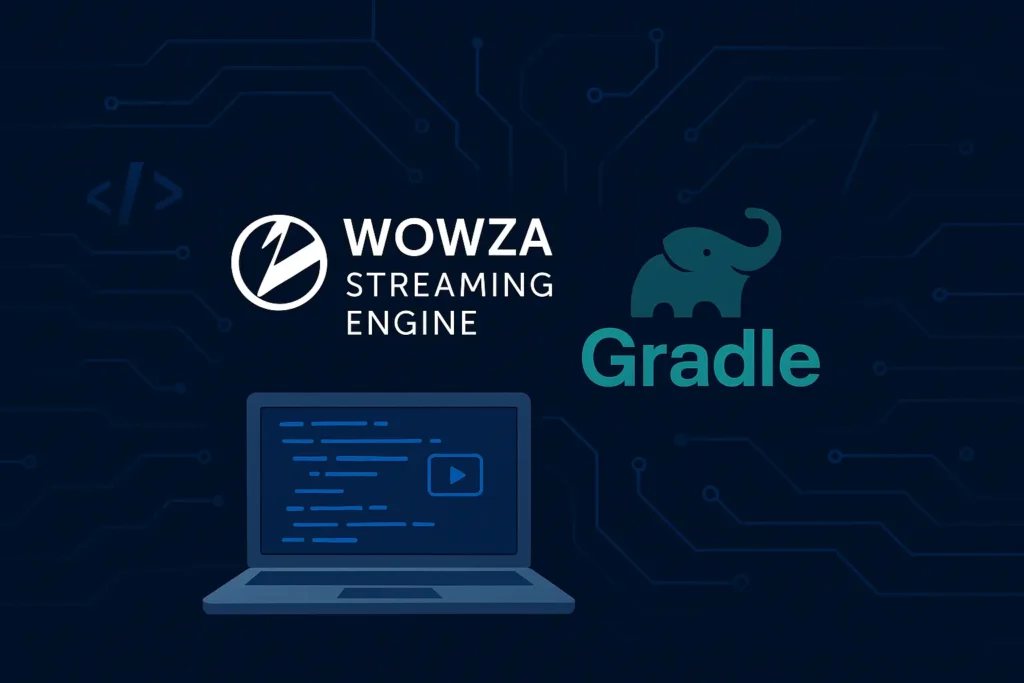
Introduction: The Rise of Wowza and Gradle in Modern Development
In the fast-evolving digital landscape, where live streaming has become a backbone of entertainment, business, and education, platforms like Wowza Streaming Engine have revolutionized how video content is delivered across global networks. From powering live broadcasts, webinars, e-sports tournaments, corporate training, to interactive online classrooms, Wowza provides an efficient, reliable, and highly scalable streaming solution trusted by thousands of companies worldwide. Yet, as developers integrate streaming into their applications, challenges often arise around automation, build processes, and deployment pipelines. This is where Gradle, a robust build automation tool, plays a critical role. By blending Wowza’s powerful streaming capabilities with Gradle’s streamlined automation and dependency management, organizations unlock smoother development workflows, faster deployment cycles, and more efficient handling of streaming applications. Unlike traditional build tools that are rigid or require extensive configuration, Gradle offers flexibility, scalability, and performance enhancements that perfectly align with Wowza’s dynamic environment. The integration of Wowza Gradle plugins allows developers to automate builds, manage dependencies, handle continuous integration pipelines, and ensure that streaming applications run consistently across different environments. With industries increasingly demanding real-time video solutions, Wowza Gradle integration is not just an option but a necessity for forward-looking developers and enterprises. By adopting this synergy, teams can reduce human error, accelerate project delivery, and maintain the highest quality streaming performance—all while ensuring long-term scalability in the digital era.
Understanding Wowza Streaming Engine
Wowza Streaming Engine is a powerful media server software designed to deliver live and on-demand video content. It supports multiple streaming protocols, including HLS, MPEG-DASH, RTMP, and WebRTC, making it highly versatile. Developers can use Wowza to stream to desktops, mobile devices, smart TVs, and IoT-based platforms. Its architecture is built for scalability, meaning it can handle thousands of concurrent viewers without significant latency issues. Additionally, Wowza provides APIs and SDKs, enabling integration with custom applications. Businesses often choose Wowza because it balances reliability, scalability, and compatibility across platforms.
What is Gradle and Why It Matters
Gradle is a modern build automation tool used for compiling code, packaging applications, and managing dependencies. Unlike older tools like Ant or Maven, Gradle provides faster build times through incremental compilation and caching. It supports multiple programming languages, including Java, Kotlin, and Groovy, making it highly adaptable. Developers value Gradle’s declarative build scripts and ability to integrate seamlessly into CI/CD pipelines. For Wowza projects, Gradle simplifies complex configurations, automates repetitive tasks, and improves deployment efficiency. Essentially, Gradle ensures developers can focus on streaming innovation rather than tedious build processes.

Why Integrate Wowza with Gradle?
Integrating Wowza with Gradle provides organizations with several advantages. First, it automates repetitive tasks like packaging streaming applications, reducing manual errors. Second, it enhances CI/CD integration, enabling developers to deploy updates quickly and consistently. Third, Gradle’s dependency management ensures that streaming applications always use compatible libraries. Fourth, teams gain improved scalability, as Gradle can handle large projects with multiple modules efficiently. Fifth, integration fosters collaboration among developers, testers, and operations teams by unifying the build and deployment process. This synergy empowers businesses to accelerate their time-to-market with reliable streaming solutions.
Key Features of Wowza Gradle Integration
- Automated Builds – Developers can compile, test, and package streaming applications automatically.
- Dependency Management – Ensures Wowza plugins and external libraries remain consistent across environments.
- Scalable Projects – Gradle handles modular projects efficiently, ideal for large-scale streaming applications.
- CI/CD Compatibility – Seamless integration with Jenkins, GitLab, or GitHub Actions pipelines.
- Cross-Platform Support – Ensures consistent behavior on Windows, macOS, and Linux.
- Customizable Scripts – Developers can define custom Gradle tasks for Wowza-related operations.
- Improved Debugging – Incremental builds and detailed logs simplify troubleshooting during development.
Comparing Traditional Builds vs. Gradle Builds for Wowza
| Feature | Traditional Tools (Ant/Maven) | Gradle Integration with Wowza |
|---|---|---|
| Build Speed | Slower, full rebuilds | Faster with incremental builds |
| Dependency Management | Manual and rigid | Automatic and flexible |
| CI/CD Integration | Limited | Seamless and modern |
| Customization | Difficult | Highly customizable scripts |
| Error Reduction | Higher chance of mistakes | Automated, lower error rates |
| Scalability for Large Projects | Moderate | Excellent for enterprise-scale |
Steps to Implement Wowza Gradle Integration
- Install Gradle on your system and configure it with your development environment.
- Set up Wowza Streaming Engine SDK to access APIs and resources.
- Configure build.gradle file to include Wowza libraries and dependencies.
- Define custom tasks for compiling, packaging, and deploying Wowza applications.
- Integrate with CI/CD tools such as Jenkins for automated deployments.
- Run Gradle tasks for building, testing, and deploying your Wowza project.
- Monitor logs and adjust configurations for performance optimization.
Sample build.gradle for Wowza Integration
| Section | Example Configuration |
|---|---|
| Plugins | id 'java' id 'application' |
| Repositories | mavenCentral() |
| Dependencies | implementation 'com.wowza:streaming-sdk:4.x' |
| Custom Tasks | task deployWowza(type: Copy) { ... } |
| CI/CD Integration | gradle build && gradle deployWowza |
Benefits for Developers and Enterprises
Wowza Gradle integration benefits both individual developers and enterprises alike. Developers save time by automating repetitive build tasks, focusing on innovation instead. Enterprises benefit from faster deployment cycles, reducing time-to-market for streaming services. Improved reliability and reduced downtime enhance customer satisfaction. Integration also enables better collaboration among distributed teams, aligning development, testing, and deployment workflows. Cost savings arise from reduced manual intervention and fewer system errors. Scalability ensures enterprises can expand operations without encountering build bottlenecks. Ultimately, Wowza Gradle integration enhances efficiency, productivity, and competitive advantage.
Common Challenges and Solutions
- Complex Configuration: Developers may find initial Gradle scripts difficult. Solution: Use pre-configured templates.
- Version Conflicts: Dependencies may clash. Solution: Implement Gradle’s dependency resolution strategies.
- Learning Curve: Teams unfamiliar with Gradle may struggle. Solution: Provide training and documentation.
- CI/CD Integration Issues: Not all tools align smoothly. Solution: Use plugins and standardized pipelines.
- Debugging Failures: Builds may fail unexpectedly. Solution: Enable verbose logging and incremental builds.
Security Considerations
Security plays a vital role in streaming applications. Gradle ensures secure dependency management by verifying library sources. Developers should configure secure repositories to avoid malicious code. Wowza provides built-in security protocols like SSL, DRM, and encryption, which can be automated with Gradle tasks. Continuous updates through Gradle ensure that security patches are always applied. Enterprises can also integrate Gradle with vulnerability scanning tools to detect threats early. Together, Wowza and Gradle safeguard both application integrity and end-user data privacy.
Future of Wowza Gradle Integration
The future of Wowza Gradle integration looks promising. With the rise of AI-powered video analytics, automation tools like Gradle will become increasingly essential. Streaming platforms will demand faster updates, making automation non-negotiable. Integration with containerization tools like Docker and orchestration systems like Kubernetes will expand. Gradle’s support for Kotlin DSL will simplify scripting for developers. Enterprises will seek more cloud-based streaming solutions, and Gradle will provide the automation backbone. Ultimately, Wowza Gradle integration will shape the future of video streaming innovation.
Conclusion
The integration of Wowza Streaming Engine and Gradle represents a powerful synergy in modern software development. By automating builds, managing dependencies, and streamlining CI/CD workflows, this combination empowers developers and enterprises to deliver scalable, reliable, and secure streaming solutions. While challenges exist, proper implementation ensures significant efficiency gains and competitive empowers. As industries increasingly embrace live streaming and on-demand content, Wowza Gradle integration will continue to play a pivotal role in shaping a connected digital future.

